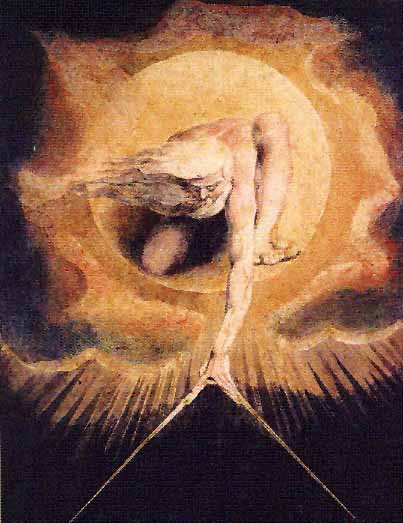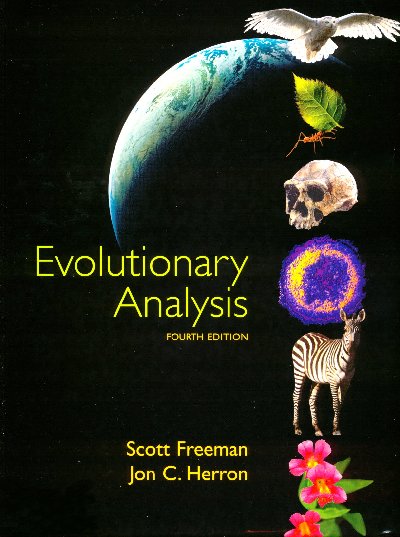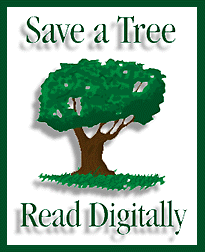- Current Assignments.
- Course Objectives.
- Course Structure.
- Class Schedule.
- Handouts Available on the Web.
- Projects Students Have Done.
- Evolution Research and Educational Resources.
- Please Read This Comment.
- To download a *.PDF (167Kb) of this file press → here.
- (1) Increase Your Understanding of the Causes, Processes, and Consequences of Evolution.
This is the domain related to disciplinary content – the “knowing things” domain. This objective includes three sub categories:
-
(a) Understand the Principal Mechanisms of Evolution. You will understand how the mechanisms of microevolutionary change (genetic
drift, gene flow, mutation, and natural selection) create, maintain, and destroy genetic variation and have resulted in the remarkable diversity of life forms
present today. Also, you will learn that these microevolutionary mechanisms affect ongoing ecological processes and can explain many current
interactions among organisms.
(b) Understand the Major Evolutionary Trends in Biotic Diversity. Several major evolutionary trends occurred during the history of life on Earth (e.g. often increasing complexity – but not always, evolution of predation, colonization of land, etc.). You will understand (i) what constitutes a major evolutionary trend, (ii) the concept of macroevolution, (iii) the role of natural selection in molding key traits, and (iv) the pathways along which life forms “progressed” within the major phyletic lineages.
(c) Understand the Evolutionary Origin of Life. A common evolutionary ancestry interconnects all life forms on Earth. You will understand the theory of how life evolved on Earth and diversified into the variety of forms we see today. - (2) Improve Your Scientific Literacy About How Evolutionary Knowledge is Constructed Using the Scientific Method.
It is through the process of scientific inquiry using the scientific method that natural phenomena are observed, interpreted, and reported. Science is a
“way of knowing” about the world around us with which one gains an understanding of our environment and the effects of human activities upon it. This is the
domain related to knowing how to construct the disciplinary content knowledge from (1) – thus, this objective spans both the “knowing how to do things” and
“knowing how to know things” domains. This objective includes three sub categories:
-
(a) Understand How to Investigate and Model the Dynamics of Evolutionary Change in Ecological Systems (Populations and Communities). You
will improve your skills at applying the scientific method to investigating, modeling, and understanding evolution in simulated populations and communities.
(b) Understand the Principles of Phylogenetic Systematics and the Methods of Bioinformatics. Bioinformatics is one of the fastest growing fields of biology. Huge advances are being made as entire genes and genomes are being sequenced and shared. Although the principal goal of many of these efforts is in applied biomedical, agricultural, or environmental research, exciting and new insights are emerging about evolutionary relationships among organisms at all taxonomic levels. Previous phylogenies, based mostly on morphological or developmental data and ill-defined guesswork, are crumbling almost daily beneath this onslaught of hi-resolution rigorous molecular genetic analyses. In this course, you will understand these techniques, and draw from the vast internet database of published genetic research and pose and text hypotheses about evolutionary relationships among organisms of interest to you.
(c) To Improve Your Scientific Thinking Skills Including Systems Thinking and Reflective Judgment. Systems thinking approaches complex problems from an holistic rather than a reductionist perspective. Reflective judgment extends evidence-based thinking to the analysis of problems such as the complex challenges facing the sustainability of our global society today. These skills will be developed throughout all activities in this course. - (3) Understand the Uses and Effects of the Theory of Evolution in Society.
Evolutionary knowledge is at the fore-front of the biological revolution that has characterized the past several decades, and will likely dominate biology, medicine, and
policy for the rest of this century. For example, biotechnology is now being used to manipulate the genome to improve our domesticated plants and animals (genetic
engineering), our environment (bioremediation), and ourselves (numerous desirable examples such as gene therapy, but some much less so such as eugenics). In
addition, evolutionary theories have been and continue to be brought into social debates to sometimes explain social behavior (sociobiology) but often to justify racism,
social injustice, or even cultural genocide. Finally, recently the theory of evolution has come under vigorous attack by extremists who proclaim themselves to be
“creation scientists” or proponents of "intelligent design" and demand access to the minds of our youth through public school science curricula. No course in evolution
would be complete without an exploration of the non-scientific belief system that these critics advocate.
Page last updated: 15 January 2007 and has been accessed times since 1 September 1997. I thank Widener University (particularly Harry Augensen and Marty Schultz) for server access and technical support. I also thank Dr.'s Itzick Vatnick and David Coughlin with whom I co-designed and co-taught this course in previous years. Course Objectives. Evolution is the most powerful and elegant theory in biology. Without evolution, biology becomes a disparate set of technical sub-disciplines. Evolutionary explanations pervade all fields in biology and bring them together under one theoretical umbrella. For this reason, evolution is the unifying concept of the biological sciences. There are three major objectives of this course: Course Structure.
Assessment. Your grades will be based upon weekly journal club writing assignments using the primary literature in evolution, several projects with presentations and writing assignments, in-class exams, an individualized "Project Exam," and a Final Exam during final exam week. Details are posted on Campus Cruiser. Lastly, to encourage and reward participation, there will be frequent in-class assessment and evaluation activities. Your final grade is based on your total accumulated points, and if everyone earns >90%, then everyone gets an “A.” Syllabus (Spring 2007)
FINAL EXAM date and time TBA during Final Exam Week. Handouts Available on the Web. *** under construction *** Projects Students Have Done. *** under construction *** Evolution Research and Educational Resources. *** under construction ***
| |||||||||||||||||||||||||||||||||||||||||||||||||||||||||||||||||||||||||||||||||||||||||||||||||||||||||||||||||||||||||||||||||||||||||||||||||||||||||||||||||||||||||||||||||||||||||||||||||||||||||||||||||


